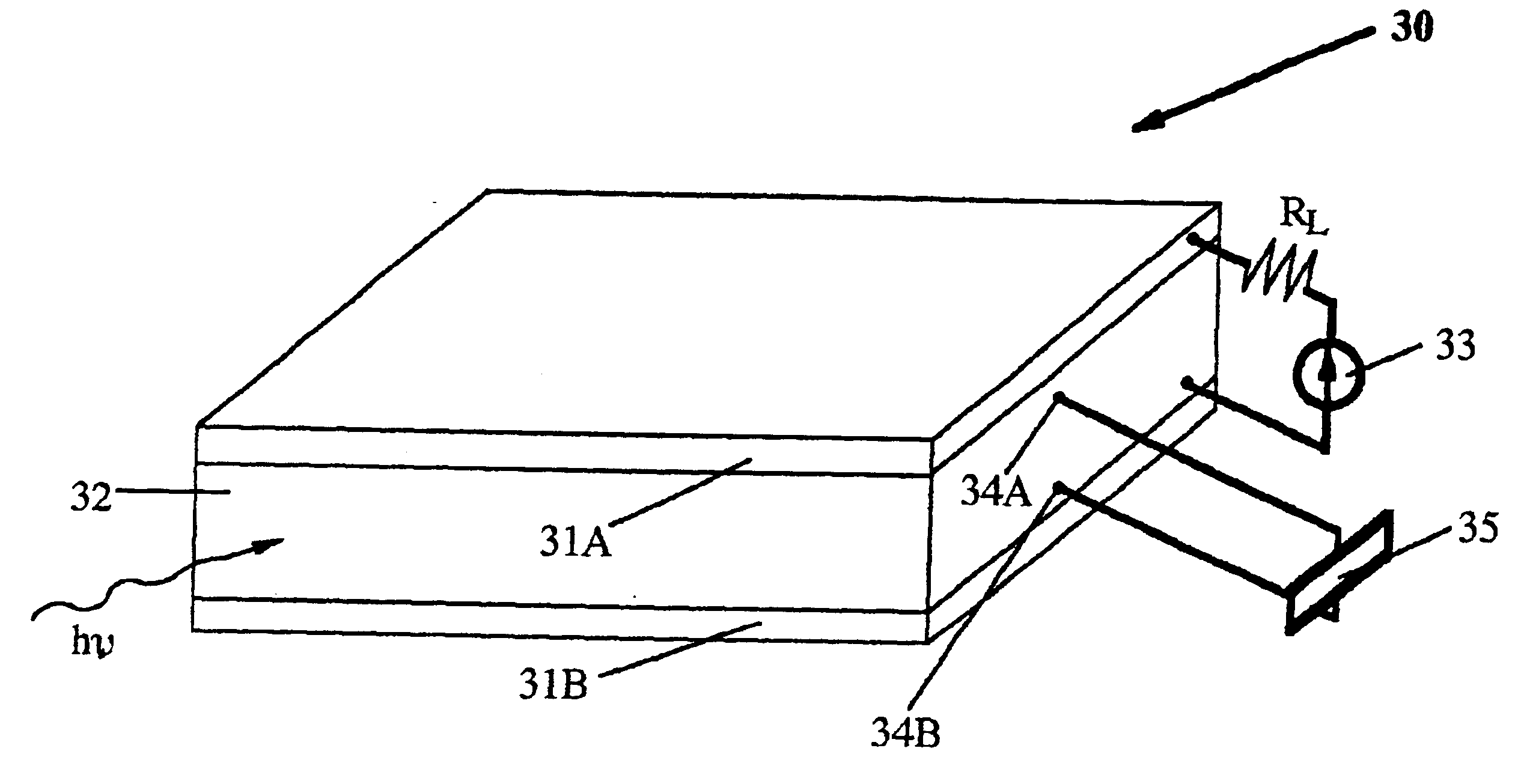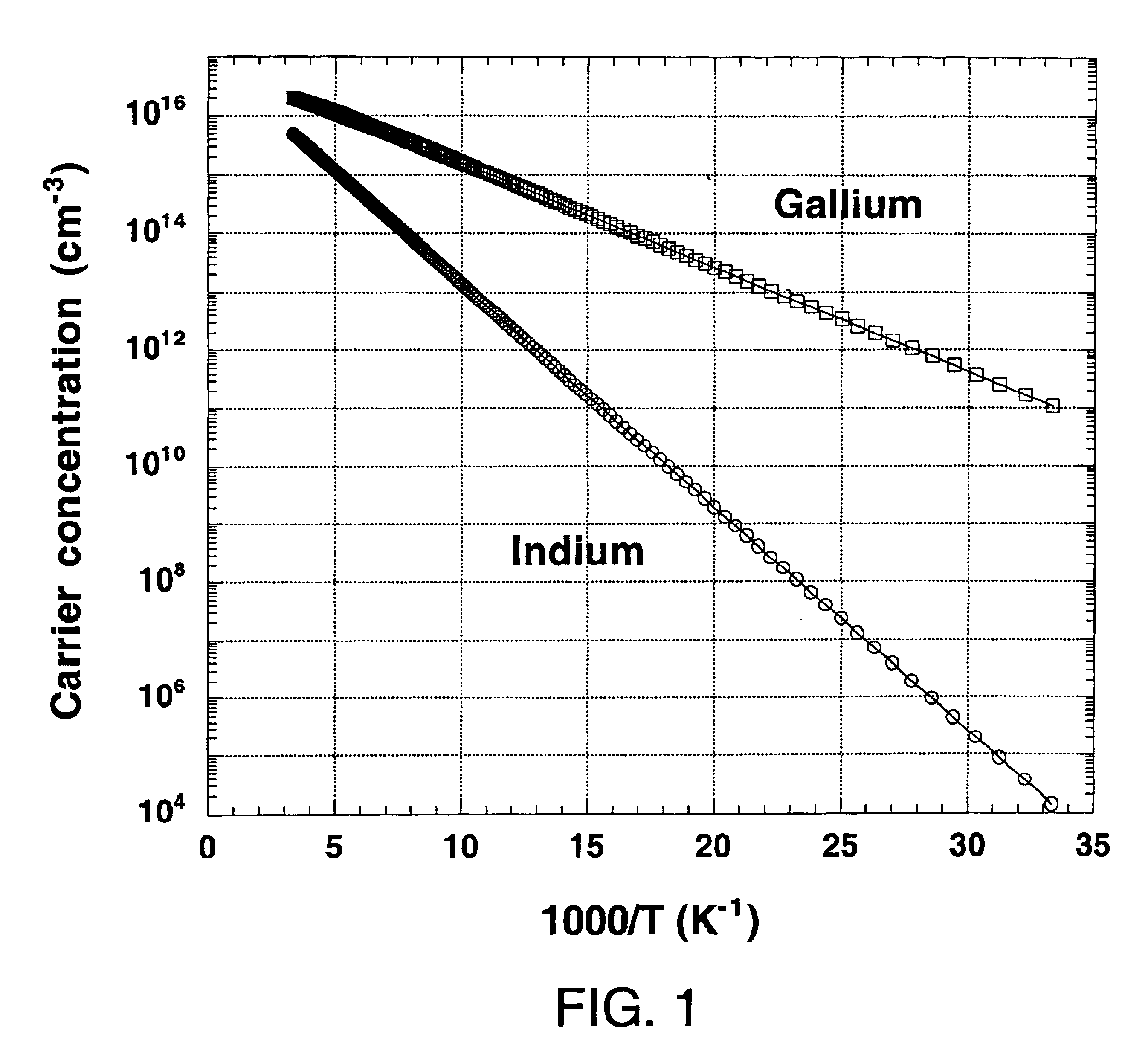Wide operational range thermal sensor
a thermal sensor and wide-area technology, applied in the field of infrared radiation sensing, can solve the problems of low infrared sensitivity, low sensitivity of detector material, and low 1/f noise, and achieve the effects of low cost, low noise, and relatively simple silicon processing
- Summary
- Abstract
- Description
- Claims
- Application Information
AI Technical Summary
Benefits of technology
Problems solved by technology
Method used
Image
Examples
Embodiment Construction
Response of a bolometer to receipt of radiation is determined by the temperature coefficient of electrical resistance for the bolometer material
α=(1 / R)dR / dT. (1)
For an impurity-doped semiconductor crystal, the temperature coefficient α is negative (conductivity increases with increasing temperature) and electrical resistivity is approximately
ρ={eN0μ(T)exp(EI / kBT)}−1, (2)
where e is electronic charge, N0 is charge carrier concentration, μ(T) is mobility for the majority carrier, kB is the Boltzmann constant and EI is an impurity ionization energy. The ac electrical component of the bolometer response is proportional to
(ω)=−α√(R) / ω. (3)
A larger value of is usually preferred.
A bolometer with resistance RB is often biased through a load resistance of about 10 RB, or higher. For practical electrical signal considerations, such as impedance load matching, RB=106 Ohms, and a 1 mm cube semiconductor crystal with resistivity ρ, the parameter can be computed for a suitable operating t...
PUM
 Login to View More
Login to View More Abstract
Description
Claims
Application Information
 Login to View More
Login to View More - R&D
- Intellectual Property
- Life Sciences
- Materials
- Tech Scout
- Unparalleled Data Quality
- Higher Quality Content
- 60% Fewer Hallucinations
Browse by: Latest US Patents, China's latest patents, Technical Efficacy Thesaurus, Application Domain, Technology Topic, Popular Technical Reports.
© 2025 PatSnap. All rights reserved.Legal|Privacy policy|Modern Slavery Act Transparency Statement|Sitemap|About US| Contact US: help@patsnap.com



